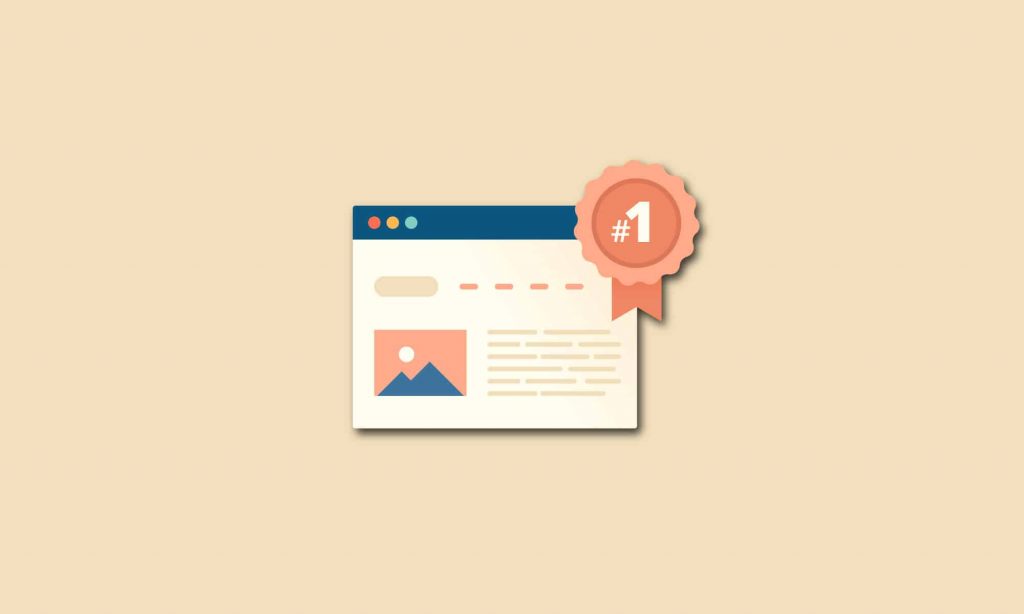Search engine optimization (SEO) is extremely important for all types of businesses, including independent schools. SEO is even more important for schools because you are seeking enrollments in a particular locality. We all know by now that 95 percent of smartphone users perform local searches using their phone; 61 percent then call the business. (Forbes)
Those are compelling statistics. It’s pretty evident that inquiries from location-based searches are a major avenue for potential families, and those numbers will only keep growing. Since these inquiries are from families explicitly looking for a school in your area, it is safe to assume these inquiries will have a higher conversion rate as well.
The good news is it’s extremely common for this to happen. SEO is one of those marketing strategies you can implement in a few weeks, but it takes time to master. You’re still learning, and with a few adjustments, you can probably get to page one ranking.
In many cases, all you have to do is correct a few SEO mistakes you might be making. Here are the top 11 common mistakes school marketers are making in 2020, and how to correct them.
SEO Mistake #1: Poor internal link structure
As your website grows with all of the awesome content you’ve been publishing, you’re bound to run into some basic internal linking errors, such as duplicate content and 404 page errors.
Internal linking structures tend to be overlooked by webmasters; however, they serve as one of the most valuable functions in your user experience (UX) and SEO strategy.
Internal links provide five valuable website functions:
Creating clear pathways to conversion pages
- Spreading authority to webpages hidden deep on your site
- Providing additional reading or interactive material for users to consume
- Organizing webpages categorically by keyword-optimized anchor text
Signaling your most important webpages to search engine crawlers
How to fix:
Resubmit your XML sitemap to search engines to open crawl paths to unlinked webpages. Ask your webmaster to do this if you’re not sure how.
- Use your robots.txt file and noindex tag wisely to ensure you don’t accidentally block important webpages on your site
- As a general rule of thumb, make sure all webpages are no more than two clicks away from your homepage or call-to-action landing page
Reassess your website architecture using fresh keyword research to organize webpages by topic. Hubspot has a great resource to help with creating topic clusters, semantic keywords, and hierarchy to your shared thesis.
SEO Mistake #2: Creating content for content’s sake
I get it – you’re super busy. And yes, best practices dictate you should produce content consistently to increase your school’s brand exposure and authority.
But, as your website and blog grow to hundreds of pages or more, it becomes harder to find unique keywords for each page and stick to a cohesive SEO strategy.
Sometimes we fall for the idea we must produce content just to have more of it. While that may have been true in the past, in 2020, this is simply untrue. Content that doesn’t fit your content and SEO strategy leads to thin and useless content, amounting to wasting resources, and can actually harm your website more than it helps.
How to fix:
Conduct strategic keyword research before you write content
- Make sure your content is relevant to your target keywords and utilizes closely-associated keywords in H2 tags and body paragraphs
- Take the time to invest in long-form content that is actionable and evergreen. Remember, we are content marketers and SEO specialists, not journalists.
Optimized content can take months to reach page one results; make sure it remains relevant and unique to your school when it does
SEO Mistake #3: Not investing in link-worthy content
Most of Google’s rank algorithm is shrouded in mystery. But we do know three of their top ranking signals:
- RankBrain, Google’s artificial intelligence system
- Links
- Content
Link-building is a major strategy recommended by SEO experts. But trying to pursue massive numbers of links can be costly and resource-intensive. The best way to acquire links is naturally, leveraging stellar content that people want to link to.
Hubspot is an excellent example of this. Every year, they invest time and resources on amazing content and industry statistics, information their target market, digital marketers, want to know. Their resources are truly invaluable; yours should be the same for your target market – parents.
SEO Mistake #4: Failing to reach parents with your content
You’ve invested time and resources in stellar content, but are parents actually finding your content?
You need a promotion strategy to get people to view your content. Many schools don’t invest as many resources into content promotion as they do the production.
Sure, you share your content on social media, but how much reach does it actually receive?
Simply publishing your latest blog post on your blog, social media channels, and e-newsletter limits its reach to a small percentage of your existing audience. If you’re looking to acquire new inquiries for your school, you’ll need to invest resources into promotional tactics.
How to fix:
Consider promotion strategies such as:
- Paid social campaigns
- Targeted sharing using keyword-optimized hashtags
- Link-sharing
SEO Mistake #5: Optimizing for the wrong keywords
You’ve invested time crafting a piece of long-form content, but it’s not attracting much traffic to your website. The ones that are coming are not staying very long and are not filling out an inquiry form.
More than likely, you’re optimizing for the wrong keywords.
While most of us understand the importance of long-tail keywords for informational queries, sometimes we make common mistakes, such as:
- Failing to segment search volume and competition by geography
- Relying too much on high-volume phrases that don’t convert
- Focusing too many resources on broad keywords (external links, internal link anchor text, etc.)
- Ignoring click-through rates
- Trying to insert awkward exact match phrases into the content
- Allocating target keywords to irrelevant content
- Choosing keywords unrelated to your target audience
How to fix:
- Research search phrases that appear in top results for both national and local searches.
- Talk to parents and see what phrases they use to talk about education for their children. Think about ways you can segment your keyword list to make it more relevant for your families.
- Use keyword tools like Google Keyword Planner and SEMrush’s keyword generator for relevant keyword ideas.
- Include region-specific keywords in your page titles and meta descriptions. Include an address and local phone number on your pages, such as your footer, so you’ll show up in the local results. Make sure you’re listed in key directories and review networks.
SEO Mistake #6: Not using analytics to see what converts
SEO isn’t just about getting organic traffic. It’s also about conversions, i.e. inquiries.
It’s easy to get caught up watching which phrases attract the most traffic. But traffic isn’t all that matters. You’re also optimizing for inquiries. Often, lower-traffic phrases will convert better because they’re more specific and relevant, getting first page rankings for several of them can lead to enrollments.
How to fix:
The only way to find out which keyword phrases will convert is to track them. Use an analytics package to set up conversion tracking for your keyword phrases and then compare them against each other to see what’s producing the best results. Knowing will help you better optimize your site as a whole and know which efforts are worth focusing on and which ones aren’t working.
SEO Mistake #7: Not writing unique title tags and meta descriptions
You might be surprised how many school websites I see that have their company name or website name as the title for every page throughout their website. It’s such a damaging mistake.
How to fix:
Every page should have a unique title and not just for SEO purposes. Your page titles are usually shared in tweets and used as the text when someone bookmarks your site. Hence descriptive, unique titles are highly important.
Example:
Let’s say your school’s name is “The Magic School.” Your SEO page titles should look something like this:
The Magic School | The only K-12 independent school in Narnia
Mission, Philosophy & History | The Magic School, the only K-12 independent school in Narnia
Admissions | The Magic School, the only K-12 independent school in Narnia
Educational Experience | The Magic School, the only K-12 independent school in Narnia Athletics – | The Magic School, the only K-12 independent school in Narnia
Alumni | The Magic School, the only K-12 independent school in Narnia
Giving | The Magic School, the only K-12 independent school in Narnia
The idea is to carry the name of your school throughout your site while focusing on specific keywords for each page. Just put your school name and tagline at the end.
Meta descriptions are also important. They are limited to 160 characters and give you the opportunity to “hook” your audience in search results.
Make each description as unique and persuasive as possible. Bet sure to use your targeted keyword and make sure people will want to click through to your page.
SEO Mistake #8: Not using unique anchor text for internal links
Too often, school marketers use generic text for internal links, such as: “click here,” “this post,” or “read more” with no other text.
From an SEO perspective, this is a waste. Sure, a call to action is a good thing, but it also costs you the opportunity of tailoring your anchor text, one of the most important components of SEO.
How to fix:
Let’s say you have a webpage that lists sample theater arts classes, and you want to include an internal link to a recent production the middle school performed. The anchor text “Middle School Production “Norse Myths” would be good anchor text. If you must have a call to action, include some relevant keywords in the anchor text, such as “Click here for recent Middle School “Norse Myths” performance gallery.”
SEO Mistake #9: Using the same anchor text for every link
Optimizing your anchor text is important, but don’t use the same anchor text for every link to a page. It looks strange to visitors, and some experts say it can hurt you with search engines because it looks like you’re trying to “game” them.
How to fix:
Use variations on your phrase, even if it’s the name of your school. You can even use a URL occasionally, so it looks more natural to readers and the search engines. You should aim to use the same keyword anchor text less than 50 percent of the time.
SEO Mistake #10: Focusing on link quantity instead of link quality
Most school marketers know backlinks are an important part of SEO ranking. But not all links are considered equal in Google’s eyes. It can be pretty easy to get massive amounts of backlinks from directories, but they can end up hurting you if you don’t also have high-quality links.
How to fix:
One link from a popular blog might do more for your search engine rankings than hundreds or even thousands of low-quality directory links that no one really uses. Yes, links from high-quality sources are harder to get, but that’s why the search engines give them more credence. They are a more reliable measure of the quality of your website.
Try to get backlinks that:
- Are relevant to your school
- Do not have a lot of outgoing links
- Do not contain links to adult, gambling or pharmacy sites (just sayin’)
You can also use a free tool like SEOQuake to check the strength of the domain and incoming links to the page.
SEO Mistake #11: Not taking advantage of a beautiful website design
Is your website a custom design, or a customized popular template?
There are hundreds of CSS or other design galleries that will link to your website based on having a great design. You can look for blogs that review designs in particular industries (such as a showcase of education websites) and ask if they will include your website.
Visitors from these sites probably won’t become enrollees because they are usually web or graphic designers, or possibly another school marketer), but the links still build the overall authority of your domain. It’s also easy to do. Just submit your site to a few education web design review sites and see if you can pick up a few high-quality links.
Click here to read this article on the SchneiderB Media website.






